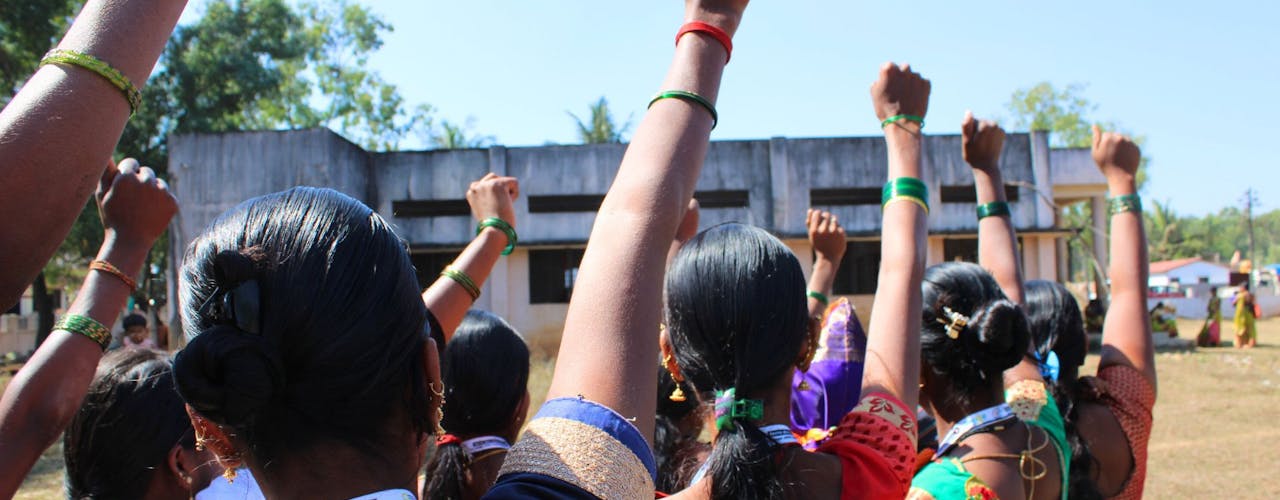A Hands-on Toolkit to Address Child Marriage and Empower Young Women

We are delighted to officially launch of the ‘Transforming Lives – A Toolkit from the Initiative for Married Adolescent Girls Empowerment (IMAGE) Programme’s Journey and Learnings in India’. This critical resource translates the comprehensive methods and successful strategies developed during the IMAGE Programme in India into a practical, replicable guide. The Toolkit serves as an evidence-based blueprint for practitioners, policymakers, and child protection agencies committed to addressing and eradicating child marriage.
This IMAGE Toolkit has been featured by the Development Asia, a knowledge platform of the Asian Development Bank, as a successful case study for effective child protection interventions.Read the full ADB Feature: Tools and strategies for empowering married adolescent girls
For many of us, the IMAGE programme feels like a second home—a place where we find comfort, guidance, and support. It has given us lessons that neither our families nor schools ever taught. Through this programme, we gained knowledge, skills, and confidence that changed our lives completely. It became a turning point, helping us face challenges and giving us the hope and opportunities to shape our future.
— Shared by EMGs during Focus Group Discussions (FGDs) in Bagalkot
Purpose
The persistent prevalence of child marriage represents a profound human rights violation, undermining the foundational rights of adolescent girls and perpetuating cycles of poverty and vulnerability. Crucially, as policy and public attention focus on prevention efforts to stop future child marriages, the millions of girls already in early marriages are often overlooked. This systemic neglect leaves them vulnerable to profound socio-economic challenges. The IMAGE programme was launched in 2018 to address this critical gap. Effective intervention requires a systematic shift away from isolated service delivery towards sustained, systemic transformation. This IMAGE Toolkit is designed specifically to facilitate this shift, offering structured pathways to create a healthy, safe, and secure environment for children in India.
Methodology
The IMAGE methodology is a structured framework for rights-based action. It is built upon three core, non-negotiable principles that guided every intervention and ensured sustained impact:
- Participatory and Gender-Responsive Design: The programme consistently employed a participatory approach, ensuring that intervention strategies were co-created with the very communities they sought to serve. This aligns with a gender-responsive approach, which critically analyses and addresses the specific gendered power dynamics and social norms that drive child marriage.
- Trauma-Informed Practice: Recognising the complex, often traumatic, lived experiences of married adolescent girls, the intervention was designed to be trauma-informed. This practice minimises the risk of re-traumatisation and prioritises physical and emotional safety, trustworthiness, and the empowerment of participants, essential elements for true healing and agency building.
- Lived Experiences and Meaningful Child Participation: Crucially, the Toolkit details mechanisms for integrating the lived experiences and voices of adolescent girls into every phase of the programme. Through structured qualitative research methods, we ensured that the girls were not merely recipients of aid but active agents in defining solutions and leading advocacy efforts. This commitment to meaningful child participation is foundational to our human rights-based mandate.

“Every time we meet, it feels like we are building something together. We share what worked, what didn’t, and how we can grow stronger. Last year, we planned to focus more on helping girls return to school, and now, seeing those changes in our villages, it feels like our voices truly matter.” – A movement leader from Bagalkot
Strategic Phasing: From Direct Support to Systemic Change
The journey of the IMAGE Programme was strategically phased to maximise learning and sustainability. Phase 1 established the foundation through core support and targeted actions, providing essential empowerment, education, and livelihood skills to young women. This foundational groundwork established trust and generated early success data.
Building on this success, Phase 2 pivoted to a more systemic focus. The accompanying Phase 2 Results Framework, included within the Toolkit, outlines clear objectives for engaging duty bearers, advocating for legal literacy—such as awareness of the Prohibition of Child Marriage Act—and strengthening local governance to sustain protective mechanisms long after the programme concludes. This dual focus ensures that while immediate needs are met, structural barriers are simultaneously dismantled.
At first, we were hesitant to let our girls join IMAGE activities. We worried about what others might think and feared the impact on our traditions. But over time, as we saw them grow more confident and brave, stopping child marriages and continuing their education, we realised the value of the programme. Now, we support them fully, and even the community respects their efforts. IMAGE has not just changed their lives but has brought a positive change to our families, too.
— Shared by families during Focus Group Discussions (FGDs) in Chikkaballapur
Scaling Impact: A Global Blueprint for Child Protection
This toolkit is more than just a report; it is an operational resource intended to be adapted and replicated by partners across the child protection sector. By providing a comprehensive overview of our processes and implementation pathways, we aim to share intellectual capital that can accelerate global efforts to end child exploitation. We invite all partners, governmental bodies, and civil society organisations to leverage this resource to accelerate the pace of rights-based transformation for adolescent girls.




